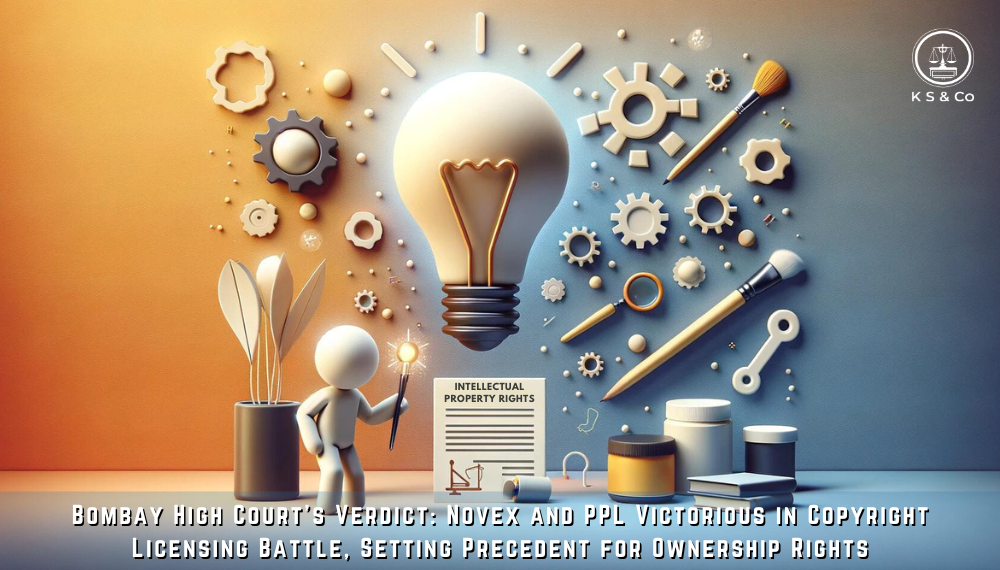This decision of Supreme Court of India deals with an important aspect of privatization of airports and revenue sharing formula as prescribed by the Airports Economic Regulatory Authority of India (AERA). This judgment will go a long way in clarifying on such aspects of revenue sharing and also will enhance the capacity of private airports in India.
Modernisation of airports around world meant India had to develop airports of a similar calibre. The Government through the Airport Infrastructure Policy in 1997, wanted to enhance India’s airport infrastructure. This policy promoted private sector participation by way of Public Private Partnership Model. Consequently, the AAI Act was amended to permit setting up of private airports and leasing existing airports to private operators.
The GMR and GVK consortiums won over the rights to manage and develop the IGIA Delhi and CSIA Mumbai airports respectively. A JV agreement was executed between GMR and AAI for DIAL and similarly between GVK and AAI for MIAL. Here a formula was created for the sharing of revenue received between the Airport Operators and the AAI. DIAL and MIAL earn their revenues from two avenues, viz., Aeronautical and Non-Aeronautical. While they have liberty to fix charges towards the latter, the former is controlled by AERA.
Dissatisfied by AERA’s determination of aeronautical tariffs, DIAL and MIAL approached the AERAAT (and later the TDSAT). Aggrieved by the TDSAT’s determination, DIAL and MIAL approached the Supreme Court. FIA, Lufthansa and AERA were also respondents in the appeals filed by DIAL and MIAL. Appeals were also filed by FIA, Lufthansa and others on similar issues in respect of TDSAT’s impugned orders. The decision of the Supreme Court in Delhi International Airport Ltd. v Airport Economic Regulatory Authority on various issues are discussed in detail below.
Treatment of Fuel Throughput Charges: The fuel supply chain at the airport begins from entry of ATF into the airport premises and extends up to fuelling the aircraft. FTC is a fee collected by airport operators from OMCs for providing fuel to the aircraft. If FTC were treated as an aeronautical revenue, it would be covered within the TR, as opposed to only 30 % of it being covered in the TR, if it were treated as a non-aeronautical revenue. Thus, the controversy is whether FTC is a service or an access fee and if FTC is a service, whether FTC falls within the category of aeronautical services.
AERA opined that the FTC should be treated as aeronautical revenue as S. 2(a)(vi) of the Act defines ‘aeronautical service’ to mean any service provided “for supplying fuel to the aircraft at an airport.” This determination, not being favourable at all to DIAL or MIAL, was challenged before the TDSAT, which held that even when the airport operator engages in providing an aeronautical service through its servants or agents, the service must be deemed to be one provided by the airport operator.
The Supreme Court did not interfere with the stand taken by AERA and the appellate tribunal. FTC being discontinued from 2020 would not mean it was a nonessential and thus a non-aeronautical service. AERA’s submissions were correct that all that the Airport Operators were merely delegating the service to provide fuel to the OMCs and are charging a concession fee. A reading of the OMDA/SSA does not give rise to any view that the FTC is a non-aeronautical service. Adopting a contrary view would adversely affect other stakeholders. Airlines would pass this charge on to the passengers. The Court upheld the view taken by the AERA and the TDSAT that the FTC was part of “Aeronautical Service.”
Calculation of Hypothetical Regulatory Asset Base (HRAB): The airports were not built from scratch and existing airports were taken over. Therefore, assets featured in its accounts would record depreciation, making it difficult to ascertain the value of the regulatory base for the first year of the first control period.
AAI had a common book of assets for several airports across India, meaning that a hypothetical regulatory asset base had to be calculated working backwards. The controversy relating to computation of HRAB was limited to whether permitting AERA to include cost of DIAL work force in addition to the contractually mandated AAI work force distort the value of HRAB?
View of the Supreme Court – The SSA’s economic efficiency principle only postulates no extra cost should be included, which did not affect the efficiency of the system. In all probability, the system would not have worked in that year without AAI’s workforce. Despite it being a transition year, both sets of workforce had to come together to achieve the required efficiency. Once AAI started pulling out its work force, DIAL was forced to supplement it. The argument that this should be excluded to increase DIAL’s profit margins was unsustainable and rejected.
Revenue from Disallowed Area: While approving the project cost for the determination of DF, AERA did not count the area of Food and Beverages, which were non-aeronautical assets built within IGIA’s terminal area. These were deemed as excessive construction and over and above the requirement in respect of the airport project.
The question before the Court was whether revenue from the disallowed area should be considered when determining aeronautical tariff. Given that the assets had been created and were being used by the airport operator and the fact that they were not asked to decommission them, the Court held the revenue from the disallowed area had to be included in the tariff.
Calculation of tax for determining the Target Revenue:
Schedule 1 of the SSA provides the formula to calculate TR. The ‘T’ component in the formula includes “corporate taxes on earnings pertaining to Aeronautical Services.” AERA’s view is that the calculation of corporate taxes should be done after deducting all costs including the revenue share or the Annual Fee paid by them to the AAI.
DIAL computation of the ‘T’ component is different as it first calculates the aeronautical earnings and then determines the corresponding taxes paid on them. This method excludes earnings from non-aeronautical sources and the corresponding tax on them. DIAL argued that this was in consonance with the SSA and followed worldwide across regulatory regimes. AERA disagreed with DIAL’s method..
The Court accepted the arguments of the Airport Operators and held that the Annual Fee paid by them would not be subtracted from expenses pertaining to aeronautical services before calculating the ‘T’ component in the formula.
Development Fee (DF): The DF concept does not feature in the OMDA or SSA, nor part of the Act initially. The cost of development of the airport exceeded the estimated budgets. The Central Government permitted DIAL to collect DF at Rs. 200 per departing domestic passenger and Rs. 1300 per departing international passenger on an ad-hoc basis for 36 months. It was held by the Supreme Court in Consumer Online Foundation v. Union of India that this order was ultra vires the AAI Act. No DF could be levied or collected from embarking passengers at major airports under S. 22A of the AAI Act unless the AERA had determined the rate of such DF. AERA determined the DF as Rs. 200 per embarking domestic passenger and Rs. 1300 per embarking international passenger commencing from 01.12.2011 for a period of 18 months. The DF was later withdrawn by DIAL with effect from 30.04.2016. Hence, the dispute related to only that window of time.
Levy of User Development Fee (UDF): AERA allowed UDF to be charged on embarking as well as disembarking passengers. This was affirmed by the TDSAT. Lufthansa appealing this decision contended that such levy was not contemplated in the Act. The AERA and the TDSAT had erroneously traced the source of this levy to S. 13(1)(b) of the Act, which referred only to AERA’s power to determine the DF. This was to be differentiated from the levy of the UDF, which was a separate fee. The plea argued that as DF was already determined under the said provision, determination of another UDF would be incorrect. The Court concurred with AERA’s rationale that ‘UDF’ as mentioned in the Aircraft Rules, 1937 is different from S. 13(1)(b) of the Act which contemplates ‘DF’ only. Thus, AERA had been mandated to determine the UDF. This was the entirety of discussion on the subject.
Conduct of AERA: Lufthansa argued that AERA failed to discharge its duty mandated by the Act by not determining the tariff in a reasonable and efficient manner. Their grievance are summarized as under:
- AERA adopted DIAL’s submissions and proposals without considering objections by stakeholders.
- While DIAL granted four meetings, other stakeholders were granted only one meeting.
- Data presented by DIAL was not verified by AERA due to scarcity of time.
The Court rejected these contention as all stakeholders were heard. The orders of the AERA and the TDSAT were exhaustive. The aspect in favour of the Airport Operators, i.e., their attempt to reduce their liability equally applied to Lufthansa that wanted to reduce its own.
Conclusion: The Court analysed all contentions, with due regard that the authority the appellate authority had performed their task. Despite the arguments of counsel, the Court analysed the matter in detail and rejected all aspects in these appeals and cross-appeals except one aspect that arose from terminology and its definition.
All appeals were dismissed except on the issue relating to corporate tax pertaining to aeronautical services, where for the reasons recorded, the Court accepted the contention of the Airport Operators that the Annual Fee paid by them should not be deducted from expenses pertaining to aeronautical services before calculating the ‘T’ element in the formula. No costs were imposed.
GLOSSARY
Abbreviation | Full Form |
AAI | Airport Authority of India |
AAI Act | Airport Authority of India Act 1994 |
AERA | Airports Economic Regulatory Authority of India |
AERA Act | Airports Economic Regulatory Authority of India Act |
AERAAT | Airports Economic Regulatory Authority Appellate Tribunal |
ATF | Aviation Turbine Fuel |
CPI | Consumer Price Index |
CSIA | Chhatrapati Shivaji Maharaj International Airport |
DF | Development Fee |
DIAL | Delhi International Airport Ltd. |
FIA | Federation of Indian Airlines |
FTC | Fuel Throughout Charge |
HRAB | Hypothecation Regulatory Asset Base |
ICAO | International Civil Aviation Organization |
IGIA | Indira Gandhi International Airport |
MIAL | Mumbai International Airport Ltd. |
MOCA | Ministry of Civil Aviation |
OMC | Oil Marketing Company |
OMDA | Operations, Management, Development Agreement |
RAB | Regulatory Asset Base |
SSA | State Support Agreement |
TDSAT | Telecom Dispute Settlement and Appellate Tribunal |
TR | Target Revenue |
UDF | User Development Fee |






Leave a Reply